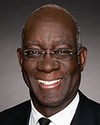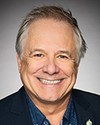First of all, I really don't consider myself a founder. I certainly was there for the first service. I had responsibility for overseeing whatever was happening in Neeginan Centre. I really helped the staff and students put on that thing, but everything that was done with respect to that first service was done by staff and students, with a little bit of consultation from not just me but also indigenous veterans.
I don't know what other communities are doing, but certainly the service we hold in Winnipeg at Neeginan Centre is quite moving. We do it in a rotunda. We can seat about 400 people on the rotunda floor. This is the old waiting room area of the train station. Every service we have is filled. It's well supported by not just the indigenous veterans but also the non-indigenous veterans. The local military militias and reserve forces and what have you also send representatives, as do the governments. We also get support from Veterans Affairs Canada.
Now, if that is being repeated elsewhere in other big cities, boy, that's really something. Winnipeg is a pretty unusual city, because I think our indigenous population is now about 25% of the city's population.




